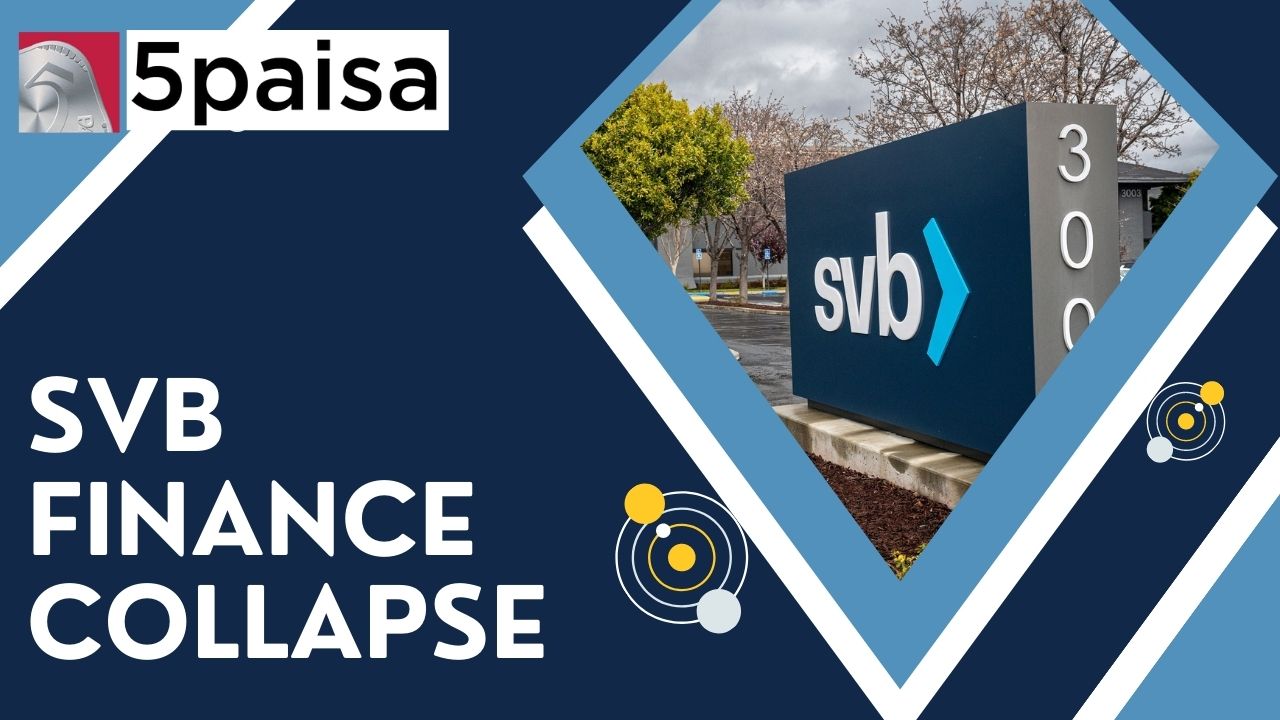Why did SVB Finance collapse and what it means for India?

Last Updated: 14th March 2023 - 06:35 am
Late last week, a popular and powerful bank in Silicon Valley, California was shut down by the regulators. Normally, it would not have attracted a lot of attention except for the fact that, in this case, banks and financial stocks across the world took a tumble. As much as SVB Financial was small in size compared to the giants like Wells Fargo, Citi, Bank of America and JP Morgan; SVB was a bank that still enjoyed a near monopoly status among the start-ups and the venture financiers. The failure of SBV Financial was an indication that the start-up ecosystem was in trouble, but there was a lot more to the story.
How SVB Financial went from boom to bust
When the US based regulators shut down SVB Financial and transferred the deposits to the Federal Deposit Insurance Corporation (FDIC), the impact was felt as far as the Bank Nifty in distant India. Incidentally, SVB is a California based bank, which takes deposits from Silicon Valley tech startups and also provides them funding. In short, it was the bank of choice for the start-up ecosystem in the United States. But companies like Nazara had deposits in SVB, Paytm had an investment from SVB till recently; and so, the linkage with India runs deep. The fortunes of SVB Financial were closely linked to the venture capital industry and the start-up ecosystem and that is where the problems arose. It was making hay over the reasons; but 2 factors had started to haunt the bank in the last few months.
To cut a long story short, there were 2 key reasons for the implosion of SVB Financial. One was the better-known reason i.e., the slowdown in the start-up funding ecosystem. But the second reason provided the trigger for the collapse and it had to do with the anti-inflation battle of the US Fed. Yes, we are talking about the rate hikes announced by the Fed over the last one year. This is how it became a double whammy. On the one hand, start-ups were finding it increasingly tough to get timely and adequate funding, which was hampering their expansion plans and also their repayment capacity. As a result, venture funds and start-ups started aggressively drawing down on the bank deposits and in the last few weeks, they had taken out nearly $41 billion of deposits from the bank. You can almost call it a run.
Let us now come to the second part; which is the spike in interest rates by the US Federal Reserve. It has already hiked rates by 450 basis points and that was not good news for companies like SVB Financial. Here is why. When the venture funds and start-ups started withdrawing deposits worth $41 billion from the bank, there was a liquidity crunch. To mee this liquidity demand, SVB had to undertake a literal fire sale of its bond portfolio. Now, bond prices fall when the rates go up, so there were huge losses on the bond portfolio. By the time SVB Financial sold its bond portfolio, it had booked a loss of $1.8 billion due to higher bond yields. Obviously, SVB could not raise equity to cover the gap, and imploded.
Will this spread across the global financial system?
The good news is that it may not because the situation is not like 2008 when all the large banks had piles of toxic assets in their books. In comparison, the current problem may be focused on SVB Financial and a handful of very small sized banks. However, one cannot overlook the fact that, when aggregated, each and every bank at some level may end up with some exposure to these small banks; either small or large. We have already seen 3 institutions go under and a fourth is on the verge. Only when the dust settles, we will get the real picture of the damage that SVB Financial would have done to the financial system as a whole. For now, the assumption is that it will not be as bad as 2008.
But, as Templeton said, the 4 most dangerous words in the finance lexicon is “This time it’s different” That may be a dangerous argument at this juncture. Remember, a series of smaller bankruptcies can leave most banks vulnerable and a hole in their books. The fall in financials appears to indicate that the macro problem is a lot more serious. The good news is that SVB Financial may be bailed out, like what they did to LTCM in 1998. Government may bail out SVB Financial for 2 reasons. Firstly, they do not want to hamper the start-up ecosystem in the US, which has been the highlight of the US growth story. Secondly, this crisis is substantially caused by the Fed hawkishness. They would not want SVB Financial as the poster boy the anti-inflation rhetoric of the Fed. So, a bailout is very likely.
Can this crisis damage the India story?
It may not damage but there are risks on two fronts. As stated earlier, from Nazara to Paytm; there are linkages with SVB Financial at various levels. The full story will only unfold in the coming weeks. Like the Fed, even the RBI has adopted a hawkish monetary stance and this outcome would force the RBI and the government to rethink their model. Already, it is evident from the Q3FY23 results that Indian companies are bearing the brunt of higher interest costs in the form of lower margins and lower interest coverage. Indian start-up system is already under pressure since late 2021 as funding is drying up and the IPO market has been quite hostile. While the direct impact of SVB on India may not be much, it could have larger implications for Indian monetary policy and its start-up policy.
- Flat ₹20 Brokerage
- Next-gen Trading
- Advance Charting
- Actionable Ideas
Trending on 5paisa
06
 Tanushree Jaiswal
Tanushree Jaiswal
Indian Market Related Articles
Disclaimer: Investment in securities market are subject to market risks, read all the related documents carefully before investing. For detailed disclaimer please Click here.
 5paisa Research Team
5paisa Research Team




